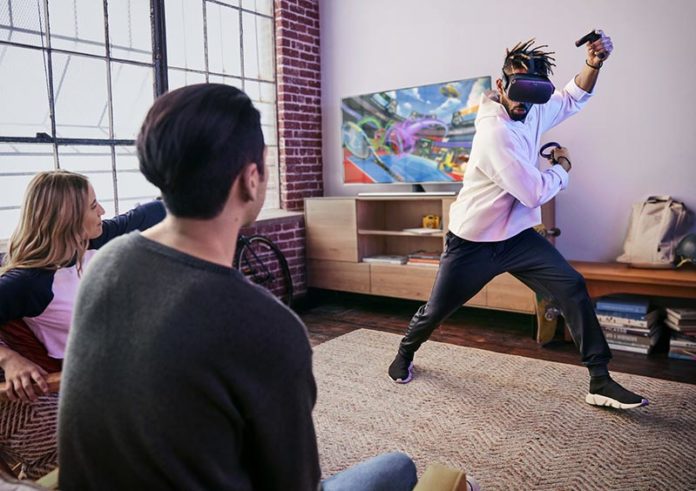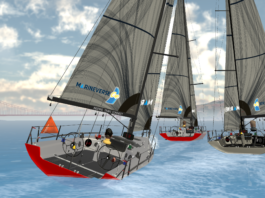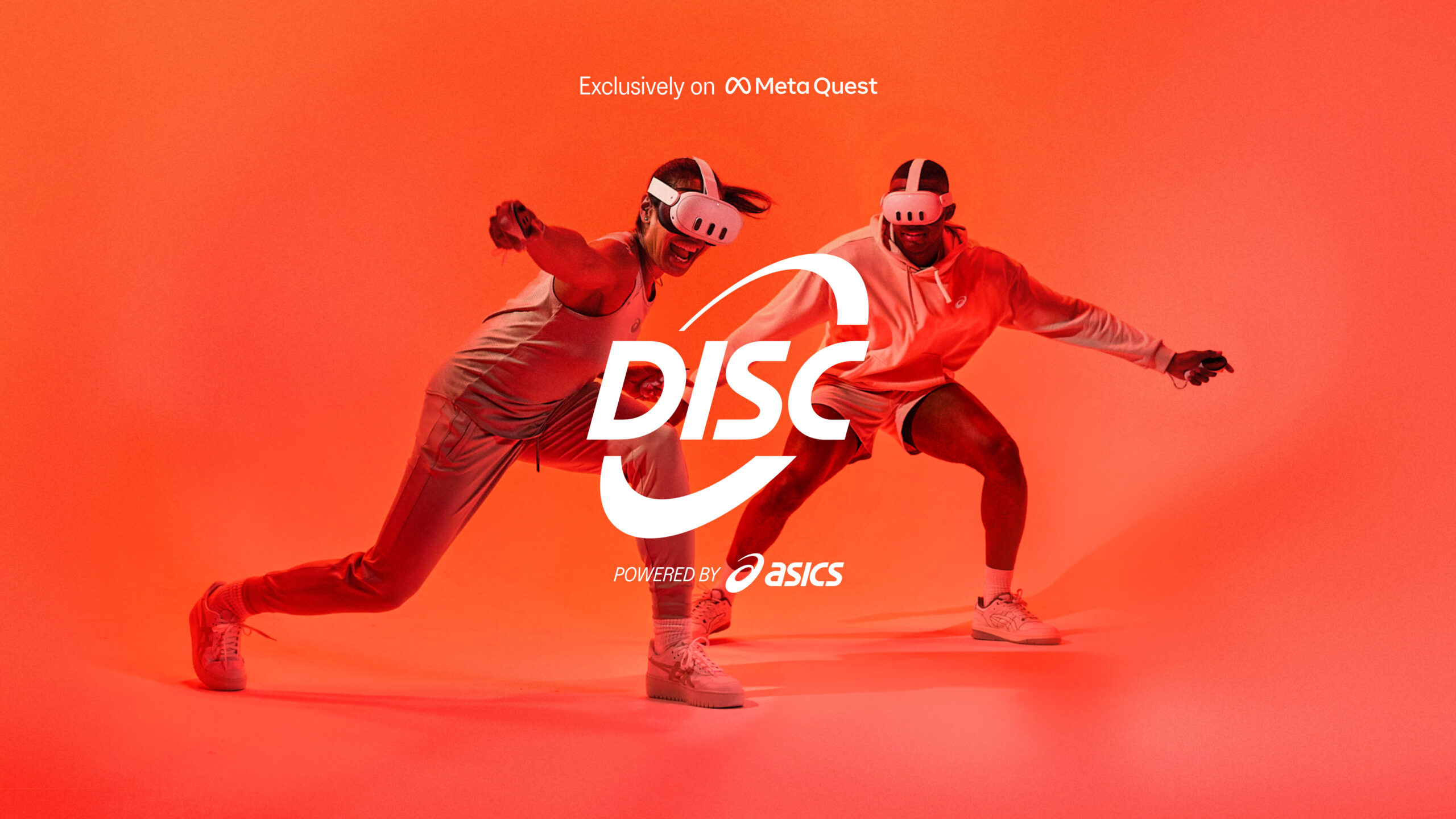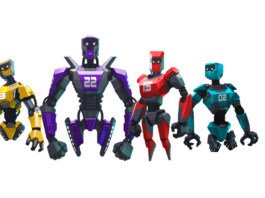This week at Oculus Connect 5, the previously titled “Project Santa Cruz” finally unveiled itself under its new moniker—the Oculus Quest.
The Quest represents Oculus’s first push into fully standalone 6DOF VR at the relatively humble price of $399.99.
I got to go hands-on with the Oculus Quest and play around with some of the games that’ll launch along with the device in Spring 2019.
While it is slated to run on the Snapdragon 835 processor, the Oculus Quest is actually capable of running graphics that appear similar to what the Oculus Rift currently outputs. Even with a maximum refresh rate of 72hz, the graphics felt smooth and noticeably less jittery than in certain Oculus Rift PC setups. Especially with a per-eye resolution of 1,600 x 1,440.
Granted, I did notice slower loading times on the Oculus Quest vs. what I’m used to on my SSD-strapped gaming PC during my demo of SUPERHOT VR.
The new Oculus Insight technology powering the Oculus Quest’s wireless 6DOF tracking renders a full 3D environment around the wearer, using four cameras seated on the front of the device. During my experience, I was pleasantly surprised to reach and grab virtual objects planted in front of or beside me, and I did not notice controller tracking loss as PC World cites in the video below.
There’s no doubt, however, that the Oculus Quest’s mobility (and ease of access) will pave an accelerated path for VR and VR fitness gaming. Oculus toted “arena-scale” game formats with 4000+ sq ft gameplay spaces, such as the Dead & Buried demo (featured below), as a new possibility with the Oculus Quest’s architecture. But it remains to be seen just how many developers will create games with arena-scale in mind.

As far as getting the Oculus Quest over my face and positioning it properly, I found that it was pretty hassle-free in comparison to my first experiences with the Oculus Rift.
The killer feature of the Oculus Quest is, of course, the lack of a cable. But how much does that missing cable truly impact gameplay? I got the opportunity to demo three games for the Oculus Quest—here’s what I experienced.
SUPERHOT VR
SUPERHOT is back and it’s better than ever. The demo placed me into a mix-up of levels that stationary 6DOF VR players will recognize beating on their existing systems.
I was immediately pleased to walk down the entirety of an L-shaped corner hallway that led into the main briefing room, an effect which accentuated the freedom of exploring an untethered VR environment.
Beyond that new hallway sequence, I was asked to pull the usual virtual headset from the ceiling of the computer room and plop it onto my very real Oculus Quest headset.
The cable and tiny playspace of my Oculus Rift often forces me to hold back against the game’s enemies. I realized while playing SUPERHOT in the Oculus Quest that, instead of slowing down and considering my blows strategically, Quest’s version of SUPERHOT felt more erratic and thrilling as I could simply go all-in on my offense—from the beginning of each room.

With nothing to hold me back, the gameplay felt less like a yoga session and more like a dance. Success was a matter of my ability to swiftly take ground and eliminate each enemy without dying, rather than outlast and outwit.

All because of that lack of a cable to deter my natural, instinctive movement, SUPERHOT opened its lungs to breathe deeply for me. And that deep breath felt good.
The guardian system did not appear once during my playthrough of the SUPERHOT VR demo on Oculus Quest, making the whole experience that much more impressive and immersive.
Project Tennis Scramble
Following a two hour line, I was pleasantly surprised to receive a greeting from Oculus’s VP of Content, Jason Rubin, as I popped the Oculus Quest on my head to try Project Tennis Scramble (working title).
It is a fun, sort of laid-back tennis game that will supposedly launch alongside the Oculus Quest next year.
Surprisingly, I found it less active than the demo of SUPERHOT. However, it was difficult to tell how active the game might actually be as I played in the compact “living room” that was showcased to represent what most players’ play spaces might be like.

According to an observation made by my friend Logan, who was playing across from me in the “open space” environment, Project Tennis Scramble was balanced to make him use more of his space (by running around more and exerting more movement) while giving me a curve for being in a relatively smaller space.
I did not confirm with a developer whether this is a bonafide game feature, but it’d make sense to include some kind of balancing for asymmetric play spaces in multiplayer sports games for the Oculus Quest.
Project Tennis Scramble felt great, with absolutely no noticeable controller drift or loss of tracking between the controllers and the Oculus Quest headset.
And while Project Tennis Scramble seemed a little on the light side in terms of exercise potential for the majority of users who play at home, the demo revealed some interesting features that would bring out the warm fuzzies in any old gamer-at-heart.
I was deeply pleased by the existence of item boxes above the net which can alter the flow of gameplay by changing different objects on the court. For example, Logan opened a box that turned my tennis racket into a cricket paddle—which totally threw off my swing mid-match.
Another box turned the tennis ball into a badminton birdie that was more sensitive to hard swings and landed much slower. Immediate shifts in gameplay flow, like that, are what will absolutely give this game longevity; friends will have a way to enjoy chaotic multiplayer rounds together, similar to Mario Kart or Super Smash Bros.
I really found Project Tennis Scramble a clever way to integrate classic multiplayer house-party gameplay into a decently realized sport with VR presence, and I’m excited to see more of it.
Dead & Buried Arena
Dead & Buried Arena gave me a serious glimpse into what VR arcades powered by the Oculus Quest might feel like in the future.
The demo was set in an open 4000 sq ft arena (in the real world), with two teams of three players going head-to-head, running around guns blazing on one another within a simulation of an old trainyard—overlaid perfectly onto that physical arena space.

I’ve played a bit of Dead & Buried on the Oculus Rift, and the difference between physically traversing an open space and taking cover in whatever stationary spot you spawn into is night and day.
It’s totally active in the Oculus Quest, and in a way that speaks volumes about what the Quest will do for VR fitness gaming. Forget thumbsticks and artificial movement. Literally walking (or running) around the train station was an insanely new feeling for VR gameplay that might be difficult to return from.
And while the train that ran through the center of the map during the middle of gameplay wasn’t real—trust me, it was hard to believe that at the time.
Conclusion
The Oculus Quest will absolutely terraform the VR fitness landscape. No cables. No gaming PC or PS4 required. Amazing tracking. Great graphics. Shared SDK with Rift for maximal interoperability.
Play with your friends in VR. Join your friends in real life arenas. Engage in VR sports like you’d play real sports. You’ll now have the ability to play online or in-person with other Quest owners, or cross between both.
Right now, my main concern is how completely respecting Oculus Quest’s virtual geometry in an open or unfamiliar space could lead to injury. After all, without a tether and without the tiny constrained play space of the Oculus Rift, I stopped paying so much attention to the real world and truly became immersed in VR. Whether that concern will pan out remains to be seen, of course, as you will have to wait until Spring 2019 to get your hands on your own Oculus Quest headset.
Are you as excited for Oculus Quest as I am? Leave your opinions and/or concerns in the comments.




